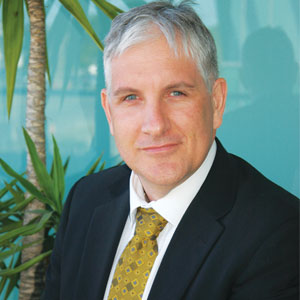THANK YOU FOR SUBSCRIBING

Enterprise Architecture - An Extremely Valuable Discipline for Great Businesses
Ken Spangler, SVP & CIO FedEx Ground and FedEx Freight, FedEx Services IT


Ken Spangler, SVP & CIO FedEx Ground and FedEx Freight, FedEx Services IT
Today Information Technology is well established as an essential contributor to business success. Modern advancements in technology enable businesses to quickly meet almost any market opportunity or need, often allowing an enterprise to reach entirely new market segments through the digital and mobile capabilities enabled by this world of extreme connectedness. FedEx is an enterprise established on a foundation of connectedness, as we are in the business of connecting people and possibilities around the world.
The acceleration of technology within businesses today introduces new levels of responsibility for business and technology leaders to properly direct, apply, and manage the use of technology to capitalize on the opportunities of a new digital world. There are increased pressures to quickly implement new capabilities and improve agility, without neglecting key legacy footprints or endangering the rock solid performance achieved in the existing business.
In fact, bridging the old and new is one of the most daunting challenges any technology enabled enterprise has today. How do we take all of the complex technology enabled business capabilities that have been built across many years and move into modern solutions that enable the speed and agility that all businesses need today?
“One challenge that has the attention of most established companies is the large legacy footprint of independent business applications created over the years.”
While many would correctly argue that there is no silver bullet to address this challenge, there is clearly a key enabler to accelerate this relentless focus on modern Enterprise Architecture (EA).EA is essential to building modern technology solutions that deliver maximum value for businesses to serve the needs of their customers and support the fast paced change required to meet the rapidly evolving demands of the world today.
Over the last decade, EA has matured in scope and processes to focus on the breadth of modern methodologies and technologies required for enterprises to proactively plan and implement solutions that provide new levels of business agility and efficiency.
In traditional IT methodologies of the past, business partners would often work with IT to document their requirements for a specific business need and/or project. IT would then create a system design to meet that need, and then build, test and implement the solution. As businesses get larger and more connected, they acquire more systems/applications whose independent interfaces often cause unsustainable complexity, leading to increasing costs and slowing the ability to meet rapid business demands. With more modern methodologies and an EA practice perspective focused on business capability road mapping, one often discovers that many core business capabilities turn out to be very similar, and can be implemented as useful building blocks able to support multiple needs, rather than its original independent solution. In addition,business capabilities developed using Agile and governed in the Scaled Agile Framework (SAFe), are delivered more rapidly and in a way that is architected to provide broader, more scalable solutions.
One challenge that has the attention of most established companies is the large legacy footprint of independent business applications created over the years. Legacy modernization has become a significant ongoing initiative for many companies.This is another reason why the focus on high performance architecture has become increasingly important and valuable. If we believe that legacy modernization is just rebuilding the same business capabilities we have today, but with more modern technologies, we will have failed. Proper engineering and architecture are essential to building the capabilities of tomorrow, especially the integrated capabilities that will power our businesses for the future.
IT, more than ever, is as much a business of integration as of information. Very few business or IT processes and capabilities stand-alone; the cost of individual custom integration solutions is not scalable and sustainable. It is essential to implement reusable capabilities behind interfaces that support reuse. Enterprise Architecture approaches are instrumental to get past the old approach of building independent solutions for specific business needs and move towards a modern approach where business capabilities are built and integrated through shared services that can enable business transformation and meet rapid growth needs. It can be argued that when one looks at the success of crowd sourcing apps such as ride sharing, it becomes clear that they are fundamentally as much about integration as innovation, and this integration provides another level of connectedness. Clearly, the integration we are seeing across mobile, social, and sensor technologies has created an explosion of connectedness capabilities and new business models.
The most straight forward way to summarize this message is to say,“Architecture matters!” Architecture really matters, more than ever, in this world of extreme connectedness, where modern methodologies and modern technologies are integrated to create the future capabilities that will drive your business success.
Weekly Brief
I agree We use cookies on this website to enhance your user experience. By clicking any link on this page you are giving your consent for us to set cookies. More info
Read Also
Artificial Intelligence - Myths And Truths
Sustainable Future through Innovative Technology Solutions
The Future Relies on Augmented AI
Digitalization with the use of digital technologies/Improving business through digital technologies
How Marco's Pizza Leaned On Technology To Succeed Amid The Pandemic By Quickly Pivoting To Contact-Free Delivery And Curbside Carryout
Bunnings Diy Digital Transformation
For a Smarter City: Trust the Data, Ignore the Hype
Smart Community Innovation for the Post Pandemic





















